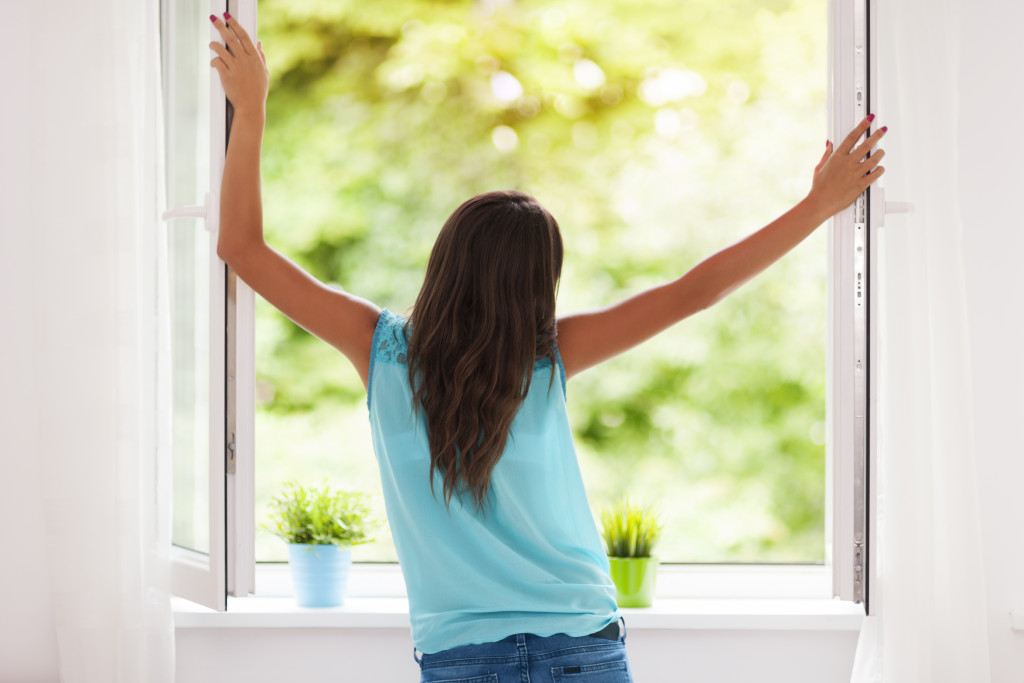Many people don’t think about the air quality in their own homes. They might be aware of smog and pollution in the city, but they assume that since they have a roof over their head, the air inside is automatically clean. Unfortunately, this isn’t always the case. In fact, many homes have poor air quality that can cause a variety of health problems. Here are some tips to improve your home’s air quality and keep your family healthy.

1. Identify the sources of air pollution in your home
There are many sources of air pollution in your home, including paint, carpeting, furniture, dust, and dirt. Even open flames like wood fires or candles can cause smog to accumulate inside the house. If you’re renovating your home, make sure that you use low-emission products on doors and windows. Be aware that paint, solvents, and cleaners that you use throughout your home may cause fumes. Radon is another hazard that needs testing to be detected. Consider having a radon mitigation system installed if the gas is found at high levels in your home.
2. Keep humidity levels between 30% to 50%
It’s a good idea to hire an HVAC company to manage the humidity in your home. If you have mold, high humidity can make the problem worse. In fact, mold spores will start growing as soon as there is water and oxygen present. The key is to keep all your home surfaces dry and prevent the growth of harmful bacteria.
3. Steer clear of harmful chemicals and gases
Many household cleaners, cleaning supplies, aerosol sprays, and solvents can be hazardous to your health. Read the label before you buy anything for your home and avoid all products that list chlorine bleach or ammonia. If you feel like something in your house smells “off”, it could be formaldehyde. This substance is typically generated by building materials such as plywood and particleboard, but it can also come from flame retardants in upholstered furniture and mattresses. Exposure to formaldehyde can cause respiratory problems so steer clear of these types of items if you want safe air quality in your home.
4. Get ventilation systems in place
If you have poor ventilation in your home, you might experience a buildup of carbon monoxide from appliances such as space heaters. Also, consider the air quality outside your home. If you have a wood deck or other structure that isn’t properly sealed, it will cause fumes to seep into your indoor spaces. You might also want to plan for changing seasons and hot summer days when you’re adding insulation. If you have little to no ventilation in your home, consider adding a ceiling fan and/or an exhaust fan near the stove and bathroom to help circulate the air.
5. Remove carpets and rugs, which can trap dust, pollen, and other allergens
Carpets and rugs can trap dust, pollen, and other allergens, so try to use hardwood or tile floors as much as possible. Carpets can also be a haven for dust mites as carpeting can generate up to 40% of an average home’s total dust.
6. Vacuum and dust regularly to keep surfaces clean
According to the U.S Environmental Protection Agency (EPA), vacuuming is an important first step in reducing indoor air pollutants that could harm your health. You should also dust surfaces regularly, including blinds, furniture, and countertops. Try to make these tasks part of your weekly routine to keep air quality high throughout your home.
7. Add houseplants
Indoor plants can help filter toxins inside your home. Many types of plants also naturally purify the air, so select various ones based on your needs and decor choices.
8. Open windows for a few hours a day, and use air conditioning when necessary
If you want to keep the air circulating in your home, consider investing in a window fan or an air purifier that can help circulate and filter the air. However, if you live near a freeway or other area with heavy traffic, it’s best to close windows to minimize exposure.
9. Keep windows and doors closed when the weather is bad outside
Open windows and doors can allow pollen, dust, and other particles into your home. If you want high-quality air inside your house, limit the amount of time that you let fresh air in when it’s cold or damp outside.
The bottom line is that there are many things you can do to improve the air quality in your home. Some are easy, like vacuuming and dusting regularly, while others might require a bit more effort, such as adding ventilation systems or removing carpets. By following these tips, you can create a safe and healthy environment for yourself and your family.




